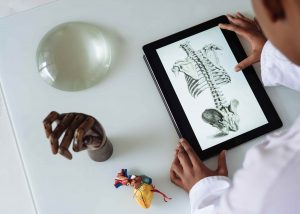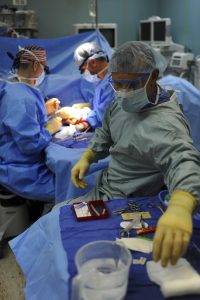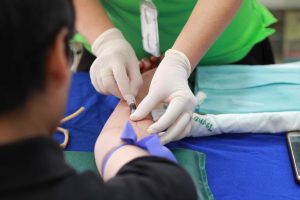Every year, brand-new nurses enter medical circles across the world – donning scrubs, clipboards, nursing shoes that help them be on their feet longer, and a heart full of excited trepidation. For most nurses, their first year is the most exciting – and terrifying in their whole profession.
Gone are the days of simulation labs and clinicals; now real lives are in their hands.This often overwhelms and alarms newly registered nurses, many of whom may choose to abandon this line of work because of an inability to cope or balance real-world risks and pressures.
That’s why this article will detail the most prominent challenges that graduating nurses will encounter when they start their first job. Study these possibilities, so that you know what’s coming when stepping out of your classes and into your workplace.
1. Physical Strain
The nursing profession is hard on the human body. Once you start working as a nurse, your body will hurt after almost every shift. Expect to be on your feet for most of the day, not to mention rushing around the hospital, lifting patients and equipment.
Expect to experience serious physical discomfort, especially in the first year when your body is not used to it. To combat this, follow a self-care routine (diet, exercise, stretches) beforehand. Stretch regularly. Purchase and wear compression stockings. Invest in good-quality shoes made specifically for healthcare professionals.

2. A High Learning Curve
Nursing school teaches you many valuable skills, but nothing can replicate the real world. What is learned in school is at most, basic when compared to the situations, an actual hospital will throw at you. Expect a high learning curve in all spheres of not just your specialty, but of your day-to-day life in your workplace.
Nurses have to deal with multiple emergency situations, which will be terrifying without experience. They will need additional in-service training in multiple competencies: basic life support (BLS), advanced cardiovascular life support (ACLS), using electronic clinical management system (CMS), entry of in-patient medication order (IPMOE), performing venipuncture and blood extraction and much more.
Be it studying and practicing technical skills, figuring out the nuance of team dynamics and communication between colleagues or the standards for presentability expected by your employer, you will have to expend yourself to absorb more knowledge and apply it practically.

3. Orientation on Protocol
Every hospital and medical facility has a distinct set of operational protocols. This doesn’t just apply to global, national and state-level medical regulations the particular establishment must follow. It also refers to both passive and active protocol systems put in place by individual healthcare institutions. All first-year registered nurses (RN) must attend detailed orientations on protocol, as well as extensive documentation they have to study and commit to memory. They will have to adhere to these protocols in all situations, especially emergencies. That means they have only about a couple of weeks to learn what guidelines and regulation their work will be subject to.

4. Workplace Bias
Expect to run into some measure of workplace bias. Work cultures vary between employers, but in a high-stress environment such as healthcare, hierarchy and bias can be more emphatic. In their first year, RNs might face alienation from some seniors. This can be difficult to work with because new nurses need all the guidance they can get. Since good relationships with colleagues enhance one’s sense of belonging and facilitate self-development, the lack of it can be disheartening and create additional pressures on the individual.
Nurses can also be affected by bias is also a factor in nurses’ daily interactions. Bias can occur on the basis of almost anything – religion, culture, ethnicity, gender, etc. As an example, have a look at this account by a male nurse who relates his experience with a young patient and their mother.
“As I introduced myself to the mother of my patient, a three-year-old boy, I noticed that she seemed hesitant…..As we talked about his favorite cartoons and after he seemed more comfortable and started engaging in play, he started to trust me and even tried to take his medications. When I returned to check on him later, his mother seemed less tense and opened up about several issues that she did not fully understand and were concerning her. Later, she told me she was initially concerned about how a male nurse would interact with her son because, in her culture, men were not associated with being compassionate or emotionally expressive.”
5. Team Dynamics
This paper on the challenges of fresh nursing graduates during their transition period reveals that new RNs were hesitant to ask their seniors for help about clearing up their uncertainties because they were anxious about being criticised for insufficient knowledge. Participants in the study reported being criticised after committing minor mistakes.
While you are expected to work independently, you are also going to work in collaboration with other RNs, supervisors and doctors. They come with their own experiences, preconceptions and expectations from new joinees. Some of them may not have the patience for gently guiding graduating nurses. There might be some friction, which new RNs will have to work through without aggravating everyone else. Since they are at the bottom of the workplace hierarchy, they might face their share of unpleasantness on the job.
6. Patients’ (and their Families’) Expectations
Patients and their families do not care (or know) that you are new on the job. They see a nurse wearing the uniform, they assume that he or she is a professional who can answer their questions and tend to their needs. Every RN, no matter how experienced they are will have to deal with patients, relatives and everyone else in the ward.
Patients are often stressed and panicked, as are their family members. They are mostly frantic about having their questions answered and trying to find assurances about the health of their loved ones. First year nurses will have to learn to comfort them, and sometimes, convey bad news. They will have to learn how to endure and defuse emotional outbursts with compassion – all while providing appropriate, timely care to those who are sick and scared.
7. A Massive Workload
Every graduating nurse will experience a heavy workload. The average ratio of nurse to patients is 1:12, whereas the highest ratio is 1:21. Their workload entails reams of never-ending paperwork as well as managing multiple activities at the same time. Some of these tasks would be providing doctor-prescribed treatment after every round, answering patients, monitoring medicine intake of patience, etc.

Most hospitals and medical institutions are understaffed. Working with insufficient manpower will increase workload, and consequently stress. This is particularly true of nurses in their first year. It is not uncommon for them to work overtime, pull all-nighters, miss meals and have to forego some sleep.
Undoubtedly, your life as a nurse will be exhausting and seem thankless once in a while. But, you will also be one of the most important people in the world, saving actual lives every single day. Obviously, walking this path won’t be easy. But with the right tools and training at hand. It will be the most worthwhile thing you’ll ever do.



